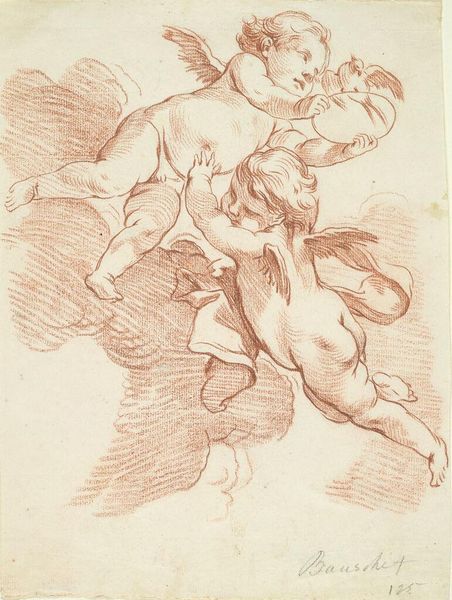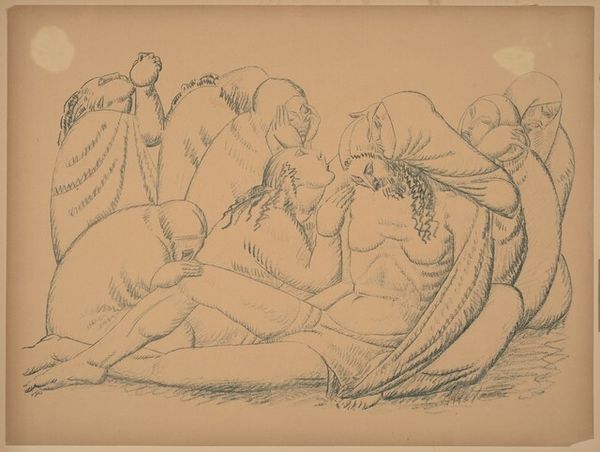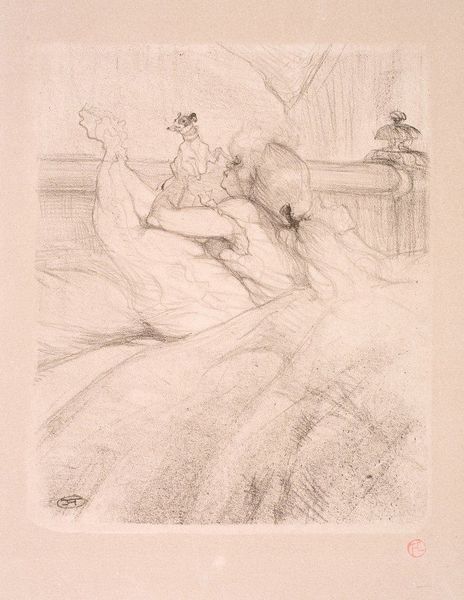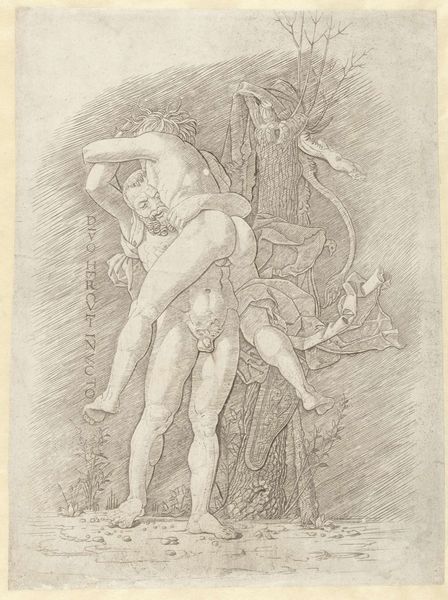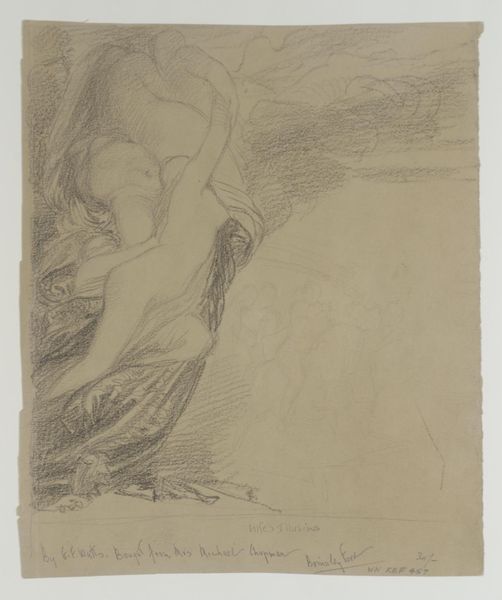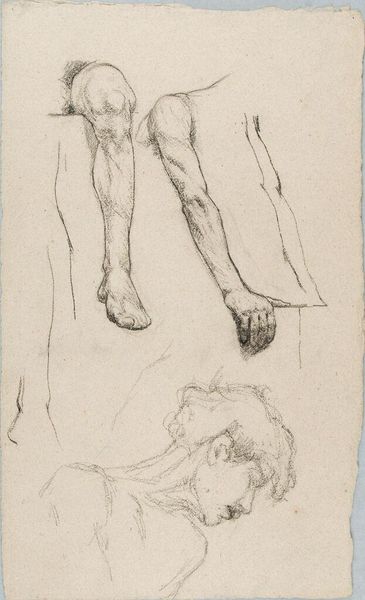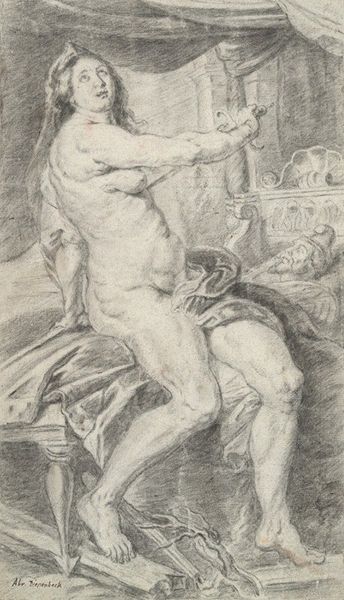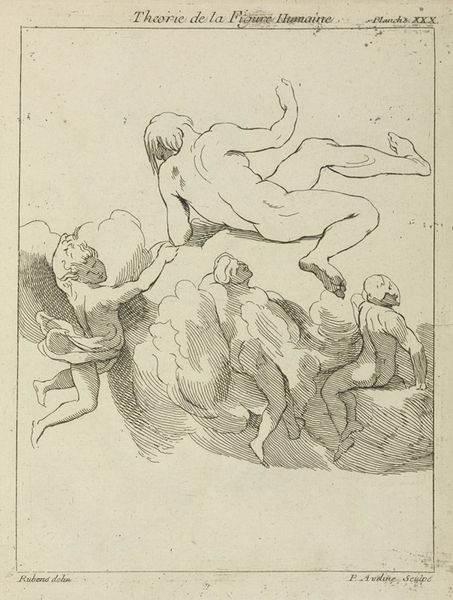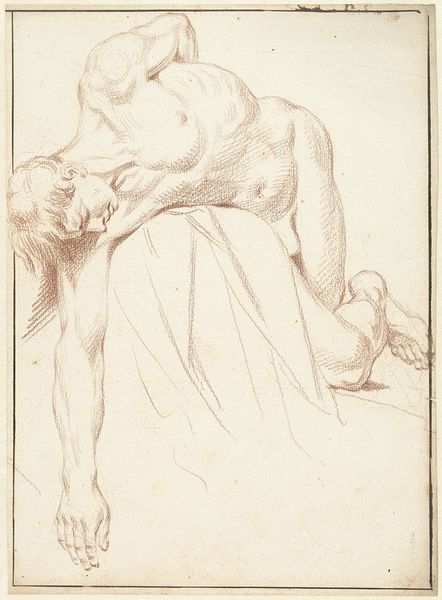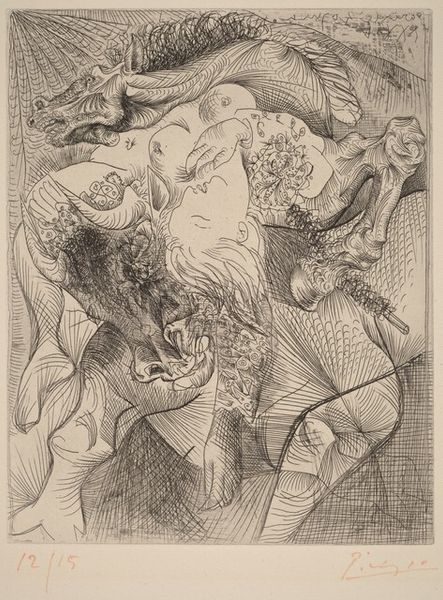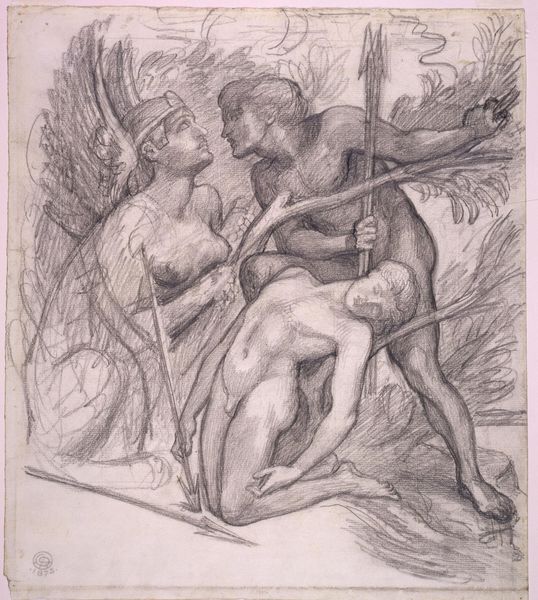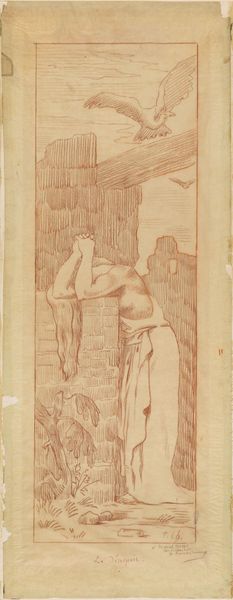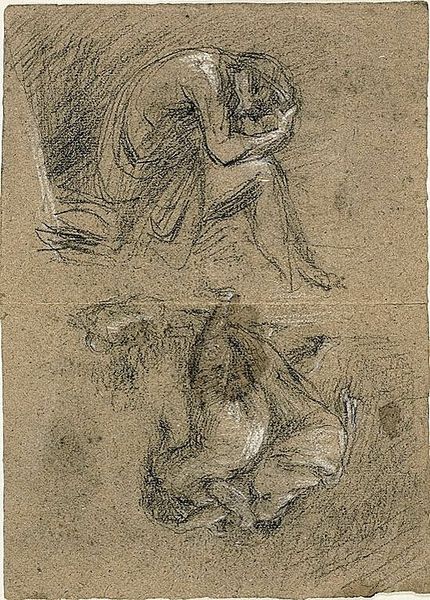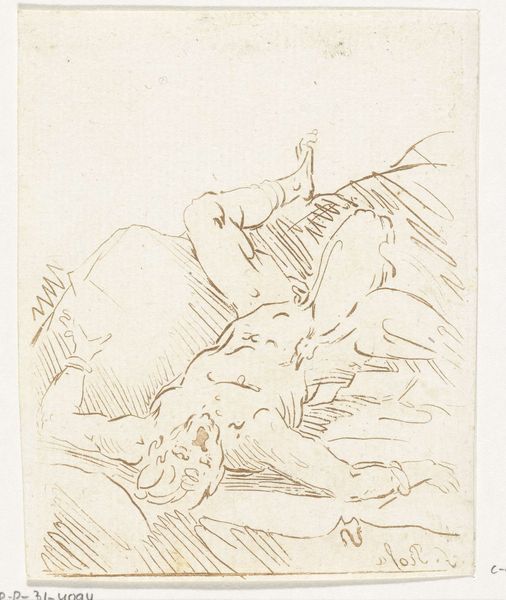
drawing, pencil
#
drawing
#
amateur sketch
#
toned paper
#
light pencil work
#
pencil sketch
#
incomplete sketchy
#
charcoal drawing
#
figuration
#
pencil drawing
#
underpainting
#
detailed observational sketch
#
pencil
#
portrait drawing
#
history-painting
#
academic-art
Copyright: Public Domain: Artvee
Editor: This is a preparatory sketch by Pierre Puvis de Chavannes for his painting, "War," dating around 1861. Executed in pencil, it strikes me as a really raw and immediate exploration of violence and vulnerability. What jumps out at you? Curator: What I notice immediately is the theatricality, even in this preliminary stage. Puvis de Chavannes is clearly drawing on historical painting traditions. How do we reconcile this rather academic approach with a subject as visceral as war? What societal expectations might be at play? Editor: I guess that in the mid-19th century, approaching a theme like "war" in such a grand, almost classical way would have lent it a certain gravitas and seriousness. It would align it with established narratives of heroism and sacrifice. Curator: Exactly! Think about the rise of museums during this period. They became spaces for national narratives and moral instruction. How does Puvis de Chavannes use these familiar tropes to perhaps subvert or complicate these narratives? Notice the almost decorative figures juxtaposed with a more grounded depiction of the horrors inflicted on individuals. Editor: It's like he's setting up a contrast between the idealized vision of war and the brutal reality of its impact. The juxtaposition of the allegorical figures above and the bound man beneath suggests a tension. Is he commenting on the manipulation of imagery by those in power? Curator: Precisely! This "Sketch for War" is a document about the institutional frameworks shaping how people understand historical and current conflicts, in particular war. A very relevant artwork for museum visitors, no? Editor: Absolutely. Thinking about how art serves as both a reflection and a manipulator of social narratives makes me see the sketch in a new light. Curator: Me too, and I now wonder how did this specific picture reach this museum collection. I’ll research more.
Comments
No comments
Be the first to comment and join the conversation on the ultimate creative platform.
